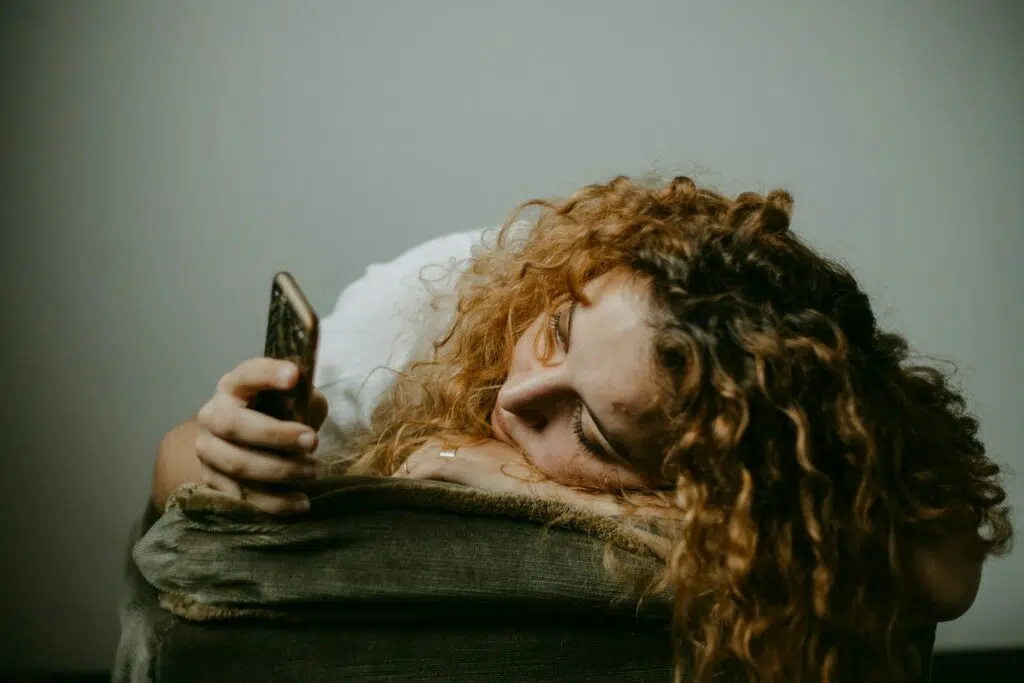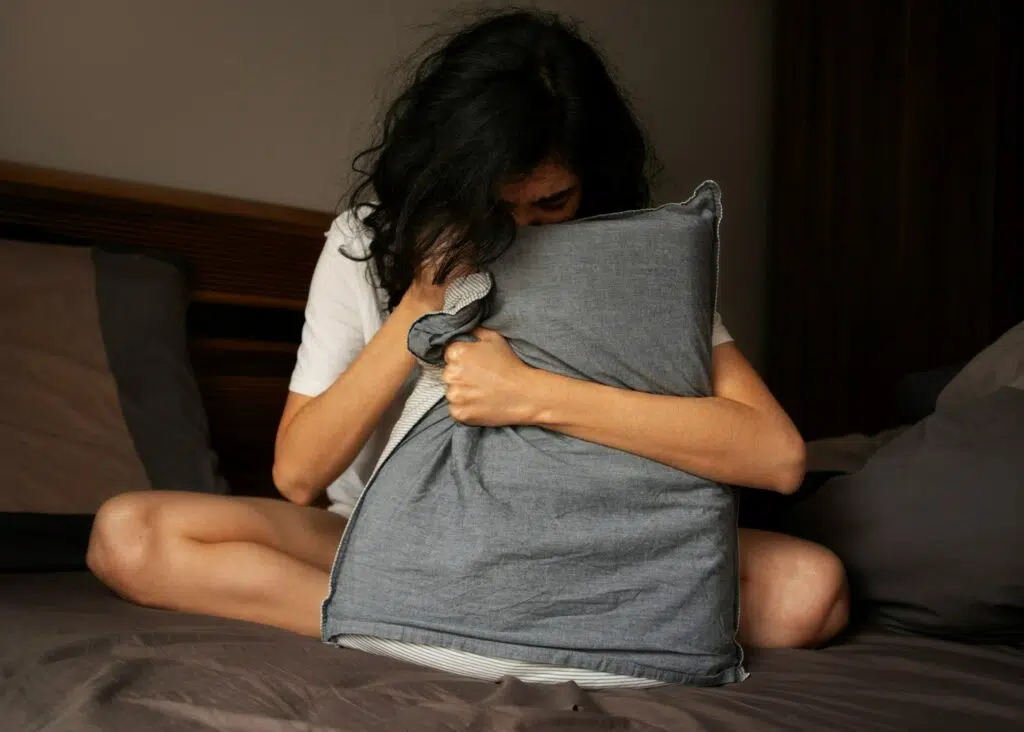Signs of Insecure-Resistant Attachment in a Relationship

Having an insecure attachment style can make it difficult to build trusting and long-lasting relationships. Individuals with an insecure-resistant attachment crave closeness but struggle to feel secure with their partner. By understanding how an insecure-resistant attachment may shape behaviors in adult relationships, you can begin to build and maintain healthier connections.
What is Insecure-Resistant Attachment?
An insecure attachment describes any attachment that’s not secure. Based on attachment theory, attachment styles develop in childhood. In short, it’s formed by how our primary caregiver cares, or doesn’t care, for us. Individuals with insecure attachment styles often experience inconsistency and a lack of reliability and security during childhood.
There are a few types of insecure attachment styles:
- Insecure-resistant attachment style (also referred to as anxious-preoccupied): Wants closeness but fears abandonment and rejection; can be needy and clingy.
- Insecure-avoidant attachment style: The opposite of needy—often avoids closeness.
- Insecure-disorganized attachment style: Individuals struggle with relationships due to chaotic behavior patterns rooted in trauma.
An insecure-resistant attachment describes an attachment style where a child shows both separation anxiety and stranger anxiety when parents leave. But, as the child is reunited with their parents, they tend to ignore them when they come back. In adults, this type of attachment style can look like someone who needs constant reassurance of their partner’s love, as they think their partner is always going to leave them.
Here’s our full guide to the different types of attachment styles in relationships to learn more about attachment theory and how it impacts close relationships.
What Causes Insecure-Resistant Attachment?
A child who’s developed an insecure-resistant attachment has often experienced inconsistent parenting. This can mean that a primary caregiver cycles between being engaged and responsive and then unavailable at other times. This can make a child feel anxious and unsure.
An insecure-resistant attachment in childhood may look like this:
- A caregiver’s response to their child is unpredictable or unreliable, and over time, the child doesn’t trust that their needs will be met.
- A lack of attention or emotional support can leave a child feeling insecure, affecting how they form secure attachments.
- If parents or caregivers are struggling with their own mental health, it can make it difficult to provide consistent care to their children.
Signs of Insecure-Resistant Attachment
Navigating romantic relationships as an adult with an insecure-resistant attachment style brings its own set of challenges. Individuals with an insecure-resistant attachment find it incredibly tough to form trusting bonds and relationships. A huge issue that arises is that there is constant fear and anxiety that a partner will leave. This fear drives behavior patterns such as clinginess and being overly needy to keep hold of that person. In reality, clinginess can end up pushing someone further away.
Signs of an insecure-resistant or anxious ambivalent attachment style in a relationship may include:
- Clinginess and neediness
- Jealousy and possessiveness
- Fear of partner leaving
- Extreme emotional highs and lows
- Difficulty trusting others and questioning motives or intentions
- Struggle to set boundaries
- Switch between clingy and emotionally withdrawn
- Need for constant reassurance
Supporting a Partner with Insecure-Resistant Attachment
Supporting a partner with an insecure attachment style requires a patient and understanding approach. When a partner has deep-rooted insecurities, this anxiety can manifest in behaviors like clinginess, jealousy, and neediness. These can be extremely difficult to navigate. While it’s important to be supportive and offer reassurance, establishing healthy boundaries and communication are essential.
Here are some ways you can support a partner with an insecure-resistant attachment:
- Set clear boundaries
- Encourage openness and communication
- Be consistent
- Let your partner know they can trust you
- Follow through on your promises
- Encourage self-reflection
Overcoming Insecure-Resistant Attachment
If you’re struggling to form and maintain meaningful relationships, whether it’s friends, family, or romantic relationships, it can be helpful to figure out your insecure attachment style. To develop a more secure relationship, both partners need to make the effort. Learning about your attachment style is a useful first step in developing a more secure attachment style.
Overcoming an insecure-resistant attachment is a gradual process. It’s not a linear journey; there will likely be ups and downs. While we can’t change how we grew up, as adults, we can develop healthy coping strategies and learn a more secure attachment style. Here are some strategies for overcoming an insecure-resistant attachment:
- Identify situations that trigger anxious feelings.
- Be kind to yourself and observe your feelings without judgment.
- Learn how past experiences may shape relationships.
- Choose partners wisely and practice open communication.
- Prioritize self-care and build self-esteem.
- Try to avoid dwelling on the past and focus on the present.
- Speak to a therapist to explore your attachment style and learn tools to cope.
Benefits of a Secure Attachment Style
When you have a secure attachment style, you often build healthy relationships based on trust. Individuals with secure attachment styles are usually trusting, confident, and resilient.
Research consistently shows a positive connection between secure attachment and positive emotions, as well as greater satisfaction in relationships.
In a relationship, a secure attachment would look like a loving couple in a partnership based on trust and respect. They communicate honestly and resolve conflict effectively. Both parties respect each other’s boundaries without being overly clingy or jealous. There’s a balance of dependence and independence, where growth and success are encouraged and celebrated. There’s a level of trust and security that no matter what life throws at you, together, you will weather the storm and come out the other side.
Remember that our attachment style doesn’t define our destiny. Your attachment style changes with experiences and relationships over time. With some self-awareness, effort, and consistency, it’s entirely possible to experience a more secure attachment style.
If you want to learn more about a secure attachment style, you might like this article on signs of a healthy relationship and how a secure attachment manifests in behaviors and emotional connections.
When to Contact Thriving Center of Psychology
Whether you’re in a relationship, single, or newly dating again, therapy can help you unpack your attachment style and learn healthy ways to communicate and connect. If you find you’re repeating unhealthy behavior patterns in a relationship like jealousy, possessiveness, or insecurity, a therapist can help you break out of a cycle.
Signs that it could be time to speak with a therapist either individually or as a couple include:
- Intense or increasing arguments and emotional outbursts.
- Having the same argument over and over without a solution.
- Poor communication with each other.
- Trust issues leading to jealousy and insecurity.
- Feelings of resentment are brewing.
- Lack of intimacy, physically or emotionally.
- Feeling like you can’t move forward.
Self-awareness, consistent effort, and therapy can help you identify unhealthy patterns, learn to regulate your emotions, and set healthy boundaries. A therapist can help you in feeling more secure in relationships by helping you to understand how you relate to others and break away from unhealthy patterns that could be holding you back.
If you’re struggling with relationship issues, low self-esteem, or difficulty setting boundaries, therapy can provide tools and techniques to help you build a stronger sense of self and healthier relationships. Schedule a consultation with Thriving Center of Psych today.

Finding a Bilingual Therapist in New York City
a city where people speak over 200 different languages, finding a bilingual therapist in New York is more than a convenience – it can be a game-changer for mental health

The Link Between Social Media and Depression
In today’s world, scrolling through social media is as routine as brushing our teeth. We open apps out of habit — on the train, in bed, while waiting in line. Platforms like Instagram, TikTok, and Facebook keep us connected, informed, and entertained.

Signs Depression is Taking a Toll on Your Relationship
Depression can impact every part of a person’s life, from their work to their romantic relationships. Dealing with depression can take its toll on both the person with depression and the supporting partner. If you’re worried that depression is affecting your relationship, understanding its impact is an important first step.

Anxiety Attack and Panic Attack Differences
’s easy to mix up anxiety and panic attacks. While anxiety attacks and panic attacks do have overlapping symptoms, they are different. Let’s get into the differences between anxiety and panic attacks so you can be in a better position to get the help you need.

